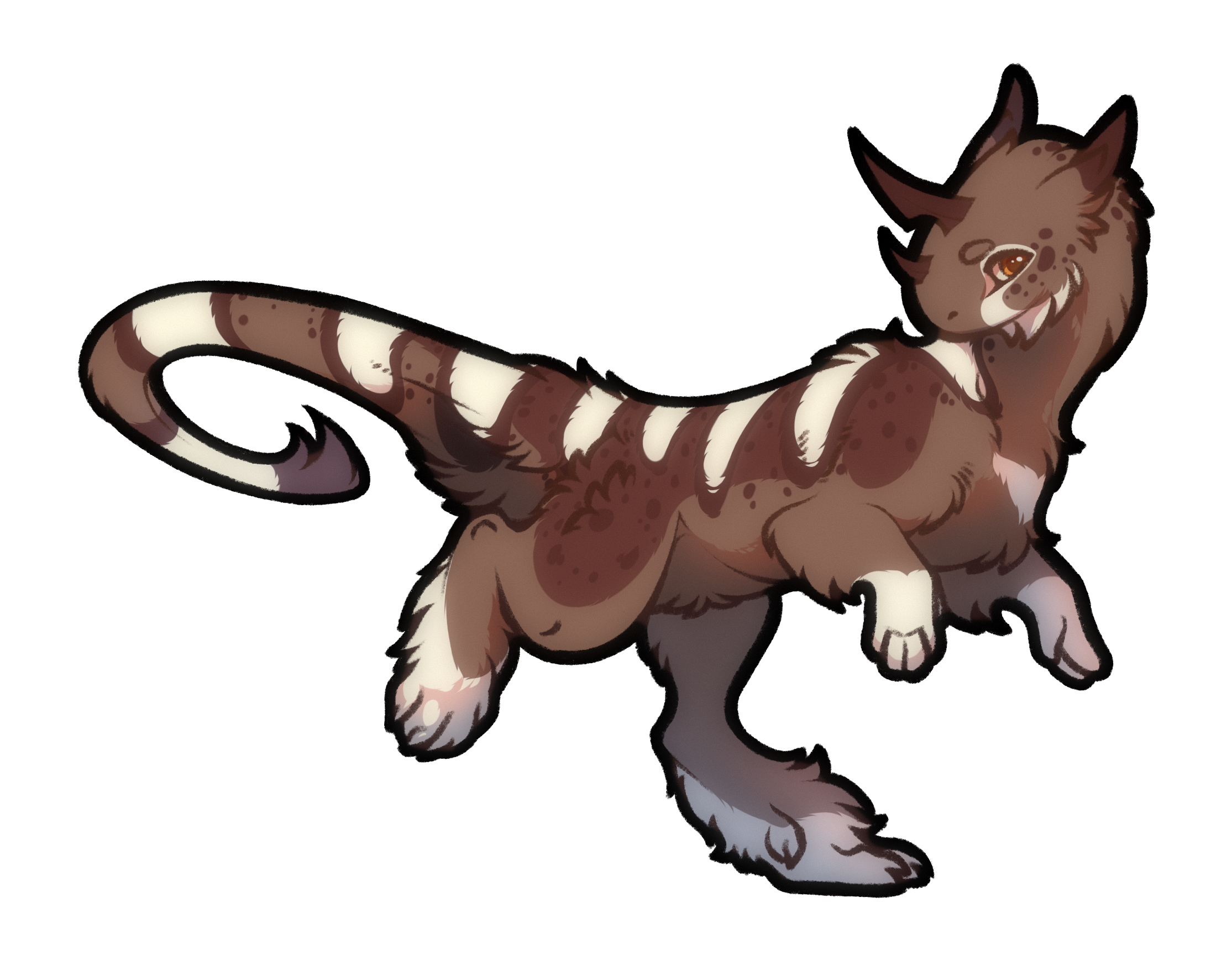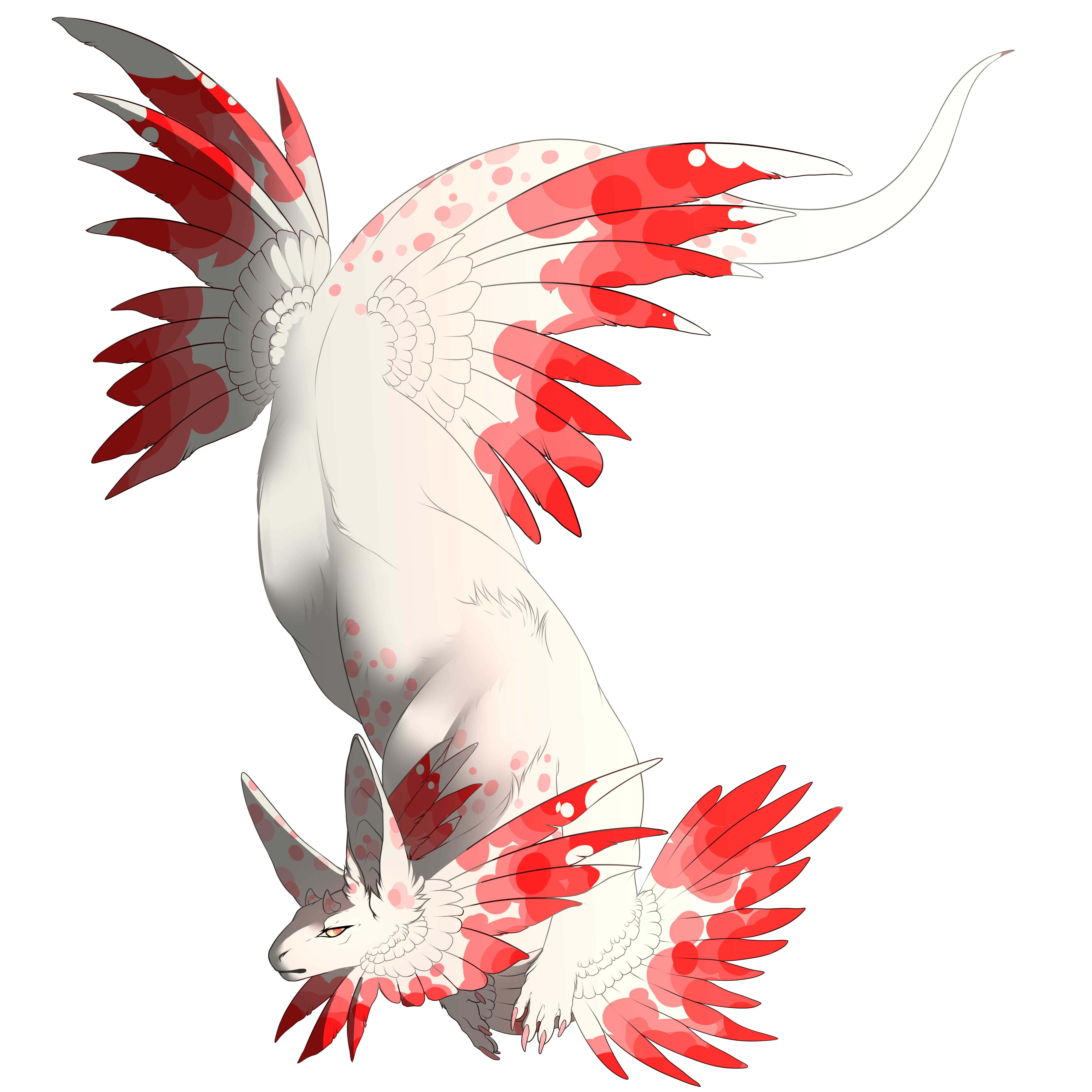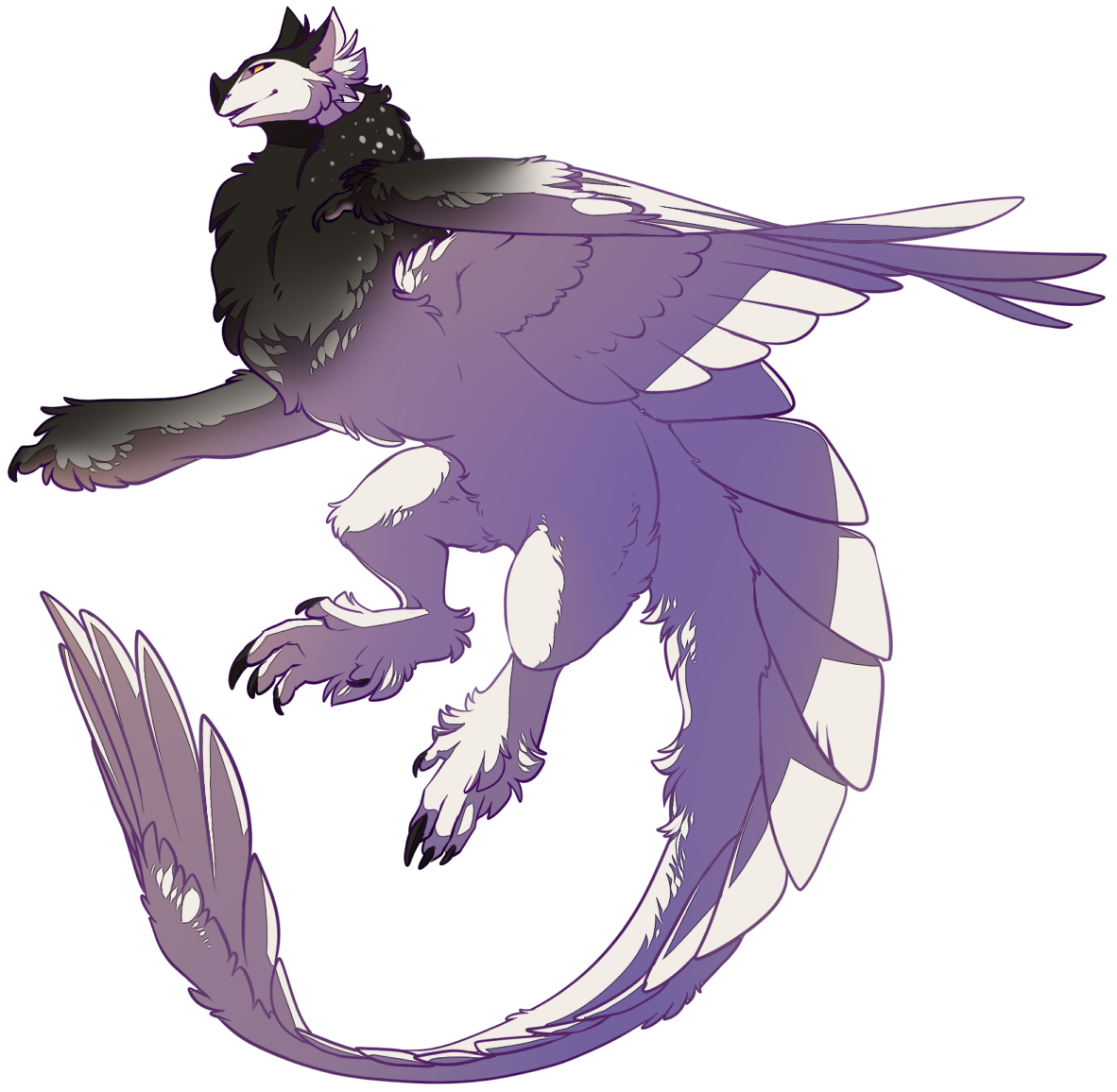Species information
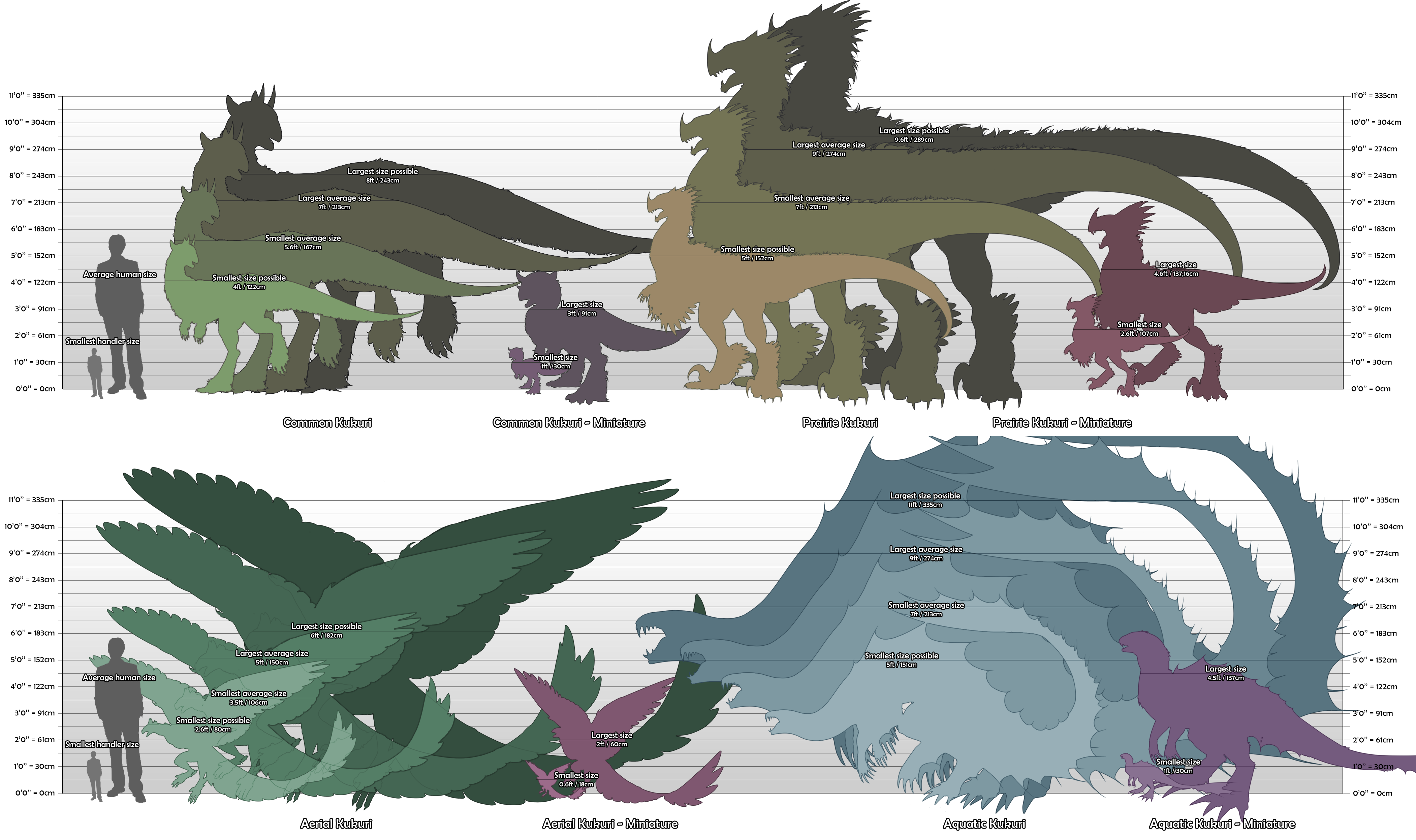
Kukuris resemble raptors in many ways, expect that they have developed fur, ears, size and bigger brains. They are an old species and have evolved many subspecies which are all breedable, however many traits of them seem to be more common than the others.
COMMON KUKURI INFORMATION
PRAIRIE KUKURI INFORMATION
AERIAL KUKURI INFORMATION
AQUATIC KUKURI INFORMATION
Terminology
Keep in mind that no-one should be forced to use these, but for those interested or wanting to dwell more into the subject here they are! And if you hear these terms used, you know where they come from.
A group of kukus: A loaf
A young kuku: A puppy
Group of kuku pups/litter: A bun
Female: Dove
Male: Rook
Shared behaviour and ecology
Every kukuri has a horn on their head and it's usually their pride and joy. They use it to fight for mates, courting them and when defending themselves. While they're capable of doing immense damage with their horns, its main purpose is to wound and scare the opponent away.
The shape or size of the horn isn't usually a deciding factor when the females are judging the males, the more important part is the battle won. This has allowed many kind of horns to evolve and keep their shape to this day.
There is a mutation which might cause a Kukuri to be born without a horn. This usually creates a weak hatchling as it will almost without a fail lose against its siblings with fights about food, and might even be fatally injured when not being able to protect itself from their attacks. Being hornless usually makes the siblings also turn against it, which increases the risk of fatal injuries. If they were to survive to adulthood, they're often driven away from their loaf, become depressed, isolated and have a harder time getting a mate.
Kukuris are known to adapt well and fast to new climates, so there's potential to meet them in most climates in the world. However, a Kukuri which is used to cold will always be unhappy in warmth, and vice versa - only next generations start the adapting process.
When it comes to common personality, most of the Kukuris seem to have a very curious nature. When one sees something interesting, it is not uncommon that the whole pack will soon be wondering what's going on. They rarely fear anything new, and their intelligence - while it does vary greatly at times - is usually at the level of an intelligent parrot. However, their curiosity often makes them seem like idiot kittens, but this of course is not true for all of them.
When domesticated, a kukuri might become overjealous of their handler if not trained against it, especially against the opposite sex of the handler. While this can be bothersome, it also makes kukuris great bodyguards if needed, and this jealousness can also be used to teach them to protect farm animals.
Diet
An interesting fact about kukuris is that while they're generally considered omnivores, it greatly differs what they actually eat. Some are strictly herbivorous, and some carnivorous, and some omnivores.
Herbivorous kukuris often inhabit the grasslands, mostly living by feeding on fruits and berries, and when the food is low on moss and leaves. They might result to meat if the food is especially sparse, like in winter. Likewise the carnivorous hunt either bigger animals in packs, or use their great sprint speed to catch smaller animals alone, yet may on difficult times resolve in eating plants. The fact that is the Kukuri carnivorous or herbivorous is inherited - if the parents are both different, there's a bigger chance that the omnivorous is born.
Mating
The females usually mature later than the males. In the wild the mating is strictly pack-centric, to lone wanderers or if some male won over the male/s in the pack, but domesticated kukuris are not that picky about their mates.
A male still has to court the female, and she can deem the male unworthy is she seems it fit. The males usually do little dances, show off their horn, cuddle with the female and some can bring killed prey animals to her. If she isn't pleased, she may attack the male, which might get dangerous if the male doesn't realize to back away.
The parents take both part in building nest after the mating. Kukuris tend to be very open to ideas when building, using anything in their environment to their advantage. Nests out of rocks, grass, sticks and feathers is the most common, but it's not rare to find bones and old forgotten children toys in there too, for example.
Puppy stage
A Kukuri usually lays a clutch of 1-3 eggs, in rare cases 4. In especially rare cases there has been 5, but it puts the female in critical condition and rarely results in healthy hatchlings. There is also a huge chance of death in these cases, and it usually occurs if the kukuris have inbred.
The eggs are oval shape, black in color and matte in texture. The average size of these eggs is 15cmx20cm, with the weight of 1,5kg to 2kg (sizes slightly wary depending on the subspecies of the dove which laid the egg).
The brooding period takes 50 days on average. Their brooding behaviour has been linked to their diet, carnivores both tend to equally brood the eggs and switch places letting other one hunt, while omnivores and herbivores usually leave the job to the sire and the mother only broods sometimes. In a pack of kukuris it's not rare for others to help a widowed kuku, but if they're left completely alone without the help of other kukuris or their handlers the eggs are likely to die.
When born a kukuri is roughly the size of a housecat, but starts rapidly growing ever since. They are born with small nubby horns, and very little fur to protect them. Their markings are usually visible or lightly faded. At 2 months of age they start wandering out of the nest, but they are dependant on their parents up until roughly 2,5 years old - some tend to mature faster, while some are slow bloomers. At the age of 1 the parents, if omnivores or carnivores, start training their pups to hunt. It's usually easy to predict in captivity, since the parents start to bring their meals over to their pups more and more, and instead of eating it just swing it around for the pups to catch. As a handler this is an important stage to keep an eye on, since especially carnivorous kukus should also learn the difference of what to hunt and what not to as soon as possible.
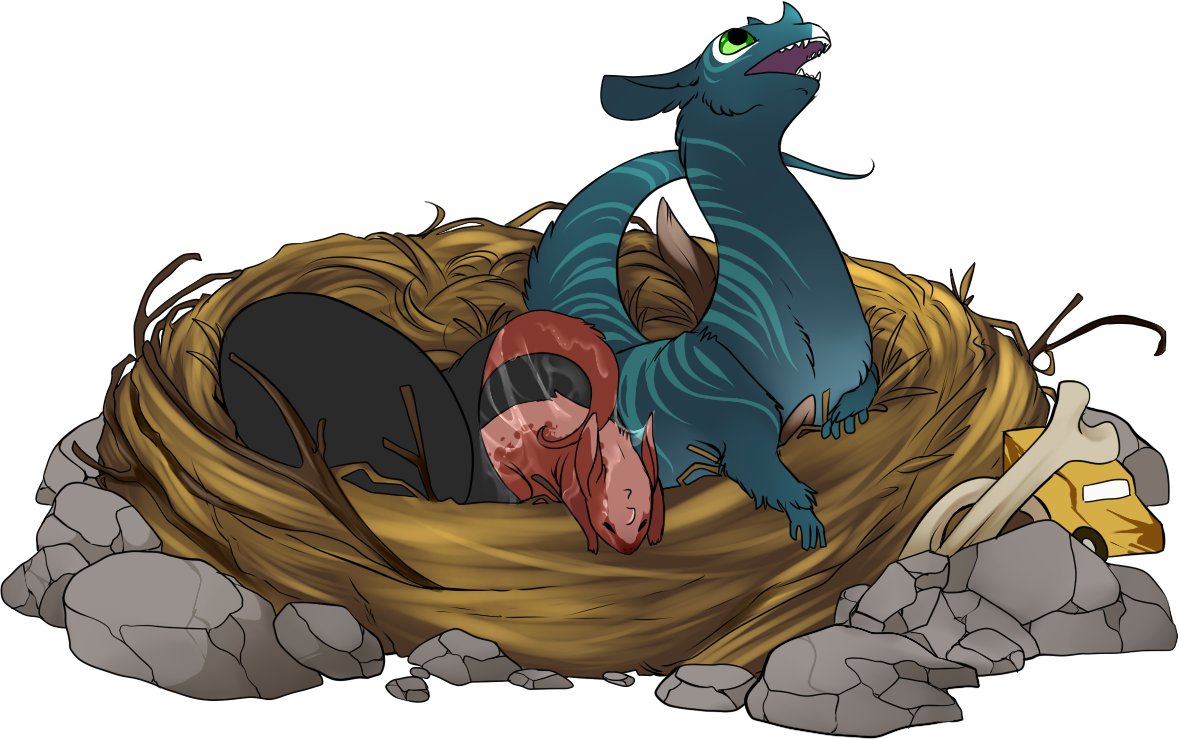
Common Kukuris
Average height: back at 5'6"-7' (5.5ft-7ft) / 167cm-213cm
Shortest height: back at 4'6"ft (4.5 ft) / 137cm
Tallest height: back at 8' (8ft) / 243cm
Average length from nose to tailtip: 13-20ft (395cm-610cm)
Average weight: 300lbs-450lbs (135kg-203kg)
Lightest weight: 280lbs (126kg)
Heaviest weight: 900lbs (407kg)
Maturing age: 2-4 years
Average dying age: 30-40 years
Shortest height: back at 4'6"ft (4.5 ft) / 137cm
Tallest height: back at 8' (8ft) / 243cm
Average length from nose to tailtip: 13-20ft (395cm-610cm)
Average weight: 300lbs-450lbs (135kg-203kg)
Lightest weight: 280lbs (126kg)
Heaviest weight: 900lbs (407kg)
Maturing age: 2-4 years
Average dying age: 30-40 years
Physical description
The fur which covers the kukuri's entire body is capable of having varied markings and colours - while they used to be more regional or pack-specific, humans domesticating them has made all these traits mingle and even create some new ones. The fur thickness is often region specific - those which live in the mountain areas are known to be bigger in size and have a thicker coat, for example.Huge eyes help them to keep watch and see far ahead, and they are slightly reactive to sunlight. They are very good at seeing motion, but can be rather nearsighted. Their sense of smell isn't that good, and mostly good for determining rotten food from healthy and checking their potential mates out. They have a hearing very close to that of a dog's. They have powerful jaws and a strong beak for tearing and eating the hardiest of meals, but their strongest weapon (depending on it's shape) is their horn.
Their second deadliest weapons are their feet and tail. The strong muscles not only allow them to run for many miles before tiring, but also help to pack a punch if they were to encounter an enemy they would rather not meet face to face.
Behaviour and ecology
Common Kukuris are known to be able to sprint for a short while at the speed of 70km, and they can keep a steady speed of 50km - this makes them as fast as ostriches. If well trained, they can maintain this speed for hours when traveling without much of an extra weight. However, their immense strength can be utilized so that one trains them to perhaps be slower, but being able to pull carriages behind them.Commons are not usually naturally violent, and smaller loaves can easily co-exist with humans with minor problems. In the wild Kukuris are pack animals with large territories, however the edges of them might overlap. They usually avoid the other packs and unnecessary conflict, but the mating seasons may start some fires. A loaf of Kukuris on average holds 2-5 individuals with usually no strict alpha, but in situations with more pack members up to 10 or more the oldest female takes the lead.
Prairie Kukuris
Average height: back at 7'-9' (7ft-9ft) / 213cm-274cm
Shortest height: back at 6'6" (6.5 ft)/ 198cm
Tallest height: back at 9'6" (9.5 ft)/ 289cm
Average length from nose to tailtip: 15-23ft (456cm-700cm)
Average weight: 700lbs-1700lbs (317kg- 771kg)
Lightest weight: 400lbs (180kg)
Heaviest weight: 3000lbs (1360kg)
Maturing age: 3-4 years
Average dying age: 30-45 years
Physical description
Prairies resemble common Kukuris, but are often bigger, a lot bulkier and have feathers on their head and limbs. Generally speaking they have smaller eyes and ears, but bigger horns and are equipped with a deadly raptor claw on their toes.While it is nearly impossible to tell apart doves and rooks in common kukuris, the differences show clearly in prairies. Generally speaking, females have longer canine teeth, longer and sharper claw, and often grow up to be bulkier than their male counterparts. The males sprout bigger feathers, and while prairie feathers do not serve any practical purpose, they use them to court the females, scare off enemies and show their general health.
Prairies are not as agile as their domesticated counterpart, but what they lack in speed they make up in bulkiness, making them the most resilient of all the kukuris.
Behaviour and ecology
Prairies are not as adapted to speed, and would lose to a common kukuri in a sprinting match. However, prairies carry much more stamina, and would win in a longer matches. They can still sprint at formidable speeds when catching their prey, but these are truly short spurts what the prairie can't keep up for a long period of time.Prairies generally create bigger packs than commons, averaging inbetween 5-15 pack members. In prairie loaves it is much more common that there is an alpha dove no matter the pack size, and while a rook can attempt to take the dove down, it's usually a futile task as other doves can also decide to protect the alpha they prefer. The most common way of a rook leading a pack is either as a couple to an alpha dove, or ex-couple where the dove has passed on.
Doves are generally stronger and more aggressive than rooks, and usually also more independent and harder to train. In a loaf they hold the last line of defense to the nests, and will not go down without a fight if they consider their puppies to be in danger.
In the loaf hierarchy, rooks usually hunt, defend borders and patrol - or take care of the nest when the doves take a turn to do the same, however the time doves spend on those roles is noticeably shorter. Even when domesticated, the doves do not let strangers near their puppies and only trusted people can get close. Generally speaking a nesting prairie dove is something anyone should want to leave alone.
In the time of mating, prairie rooks have multiple criterias to fulfill for the dove to acknowledge him - the skillful display of feathers, the condition of said feathers, the general strength of the rook and his ability to keep other rooks at bay. Since prairies are armed quite literally from head to toe and conflicts can quickly turn fatal, they usually try to avoid fights and shake off the competitors with displays of strength and beauty alike. It is not uncommon that two rooks can be face to face and still refuse to fight, trying to scare the other off with growls, glares and angry tail swipes.
Aerial Kukuris
Average height: back at 3'6"-5' (3.5ft-5ft) / 106cm-150cm
Shortest height: back at 3' (3ft) / 91cm
Tallest height: back at 6' (6ft) / 182cm
Average length from nose to tailtip: 10-20ft (304cm-305cm)
Average Wingspan: 15-30ft (425cm-915cm)
Average weight: 150lbs-300lbs (68kg-136kg)
Lightest weight: 100lbs (45kg)
Heaviest weight: 500lbs (226kg)
Maturing age: 5-7 years
Average dying age: 50-70 years
Physical description
Smallest of all Kukuri species, Aerials are the only ones capable of flight. They have feathered wings with a thumb, and their long tail has a line of tailfeathers all the way to tip. Males might have feathers on their legs, but this is absent on females. Their wingshape varies greatly, with each on their own weaknesses and strengths - their wingshape is usually what determines their role in a loaf in the wild.Like prairies, females are often more muscular and have more prominent claws than the males, while males sport bigger wings and often don fancy headfeathers.
Despite their light appearance, aerials are the direct creation of Death, and as such are closest to the magical wonder She is. They are surprisingly strong, and can carry a handler without a problem - this strength only seems to extend to their wings though, as they are still weak in a fight.
Behaviour and ecology
Compared to the prairie and common counterparts, aerials are generally calmer and lot more shy. Instead of having as strict hierarchies in their pack, it's much more common for aerials to build communal areas with a loaf as big as the living spaces allow. However, like other kukuris, doves are much more likely to attack, and are often easy to discern from rooks which often showcase flashier and bigger feathers.Aerials have wide variety of wing types, and often the style of wings they're born with change how they adapt to hunt their prey. Those with longer and sleeker wings are often speedier and would rather hunt alone and catch smaller prey, and those with bigger and rounder wings often are more likely to ambush and take short bursts of flight to surprise their prey as a group. Likewise the type of wings can often change how skilful in flight they are, and sometimes communities largely have one wing type in it due to it being most beneficial for the area they live in.
When mating, rooks try to win their mates via flashy display of feathers and elaborate dances, akin to some bird species. It is very uncommon for two rooks to fight each other, but they might be nibbed by a displeased dove. It is common for the rooks to form pairs where the other acts as a wingman, distracting the dove when the performance is going south and allowing the bachelor to attempt again. If the bachelors are unsuccessful, it is not uncommon for them to form a bonded pair instead and take care of other pairs offspring while they are out hunting or foraging, or adopting them fully if something happens to the parents.
Aquatic Kukuris
Average height: back at 7ft-9ft/ 213cm-274cm
Shortest height: back at 5ft / 151cm
Tallest height: back at 11ft / 335cm
Average length from nose to tailtip: 15ft-40ft (457cm-1219cm)
Average weight: 400lbs-1100lbs (181kg-500kg)
Lightest weight: 250lbs (113kg)
Heaviest weight: 6000lbs (2721kg)
Maturing age: 10-15 years
Average dying age: 80-200 years
